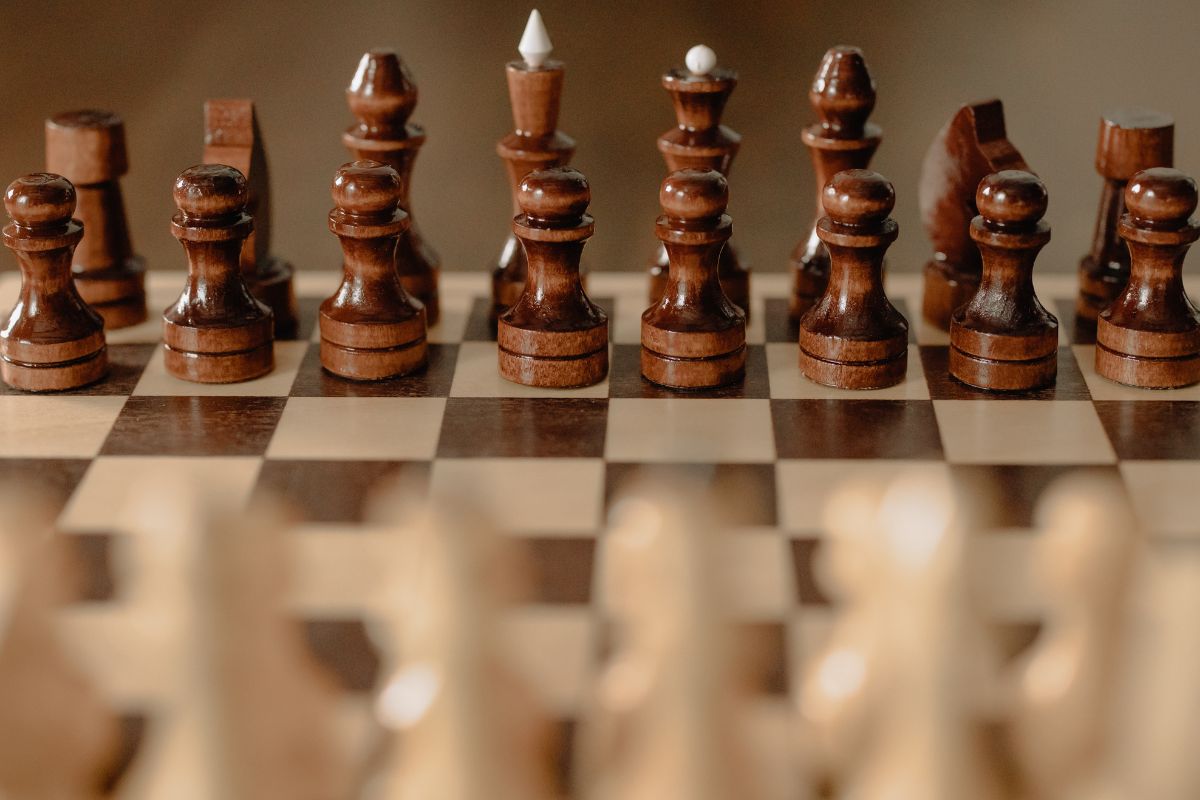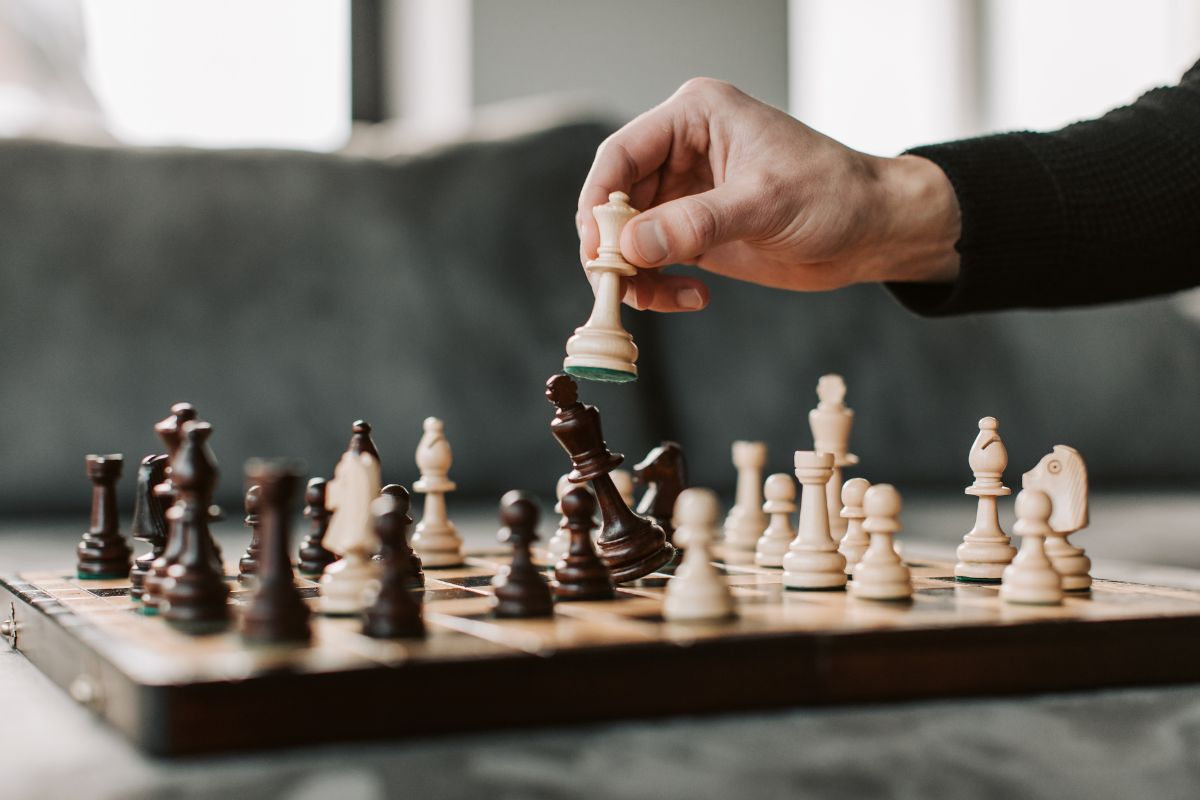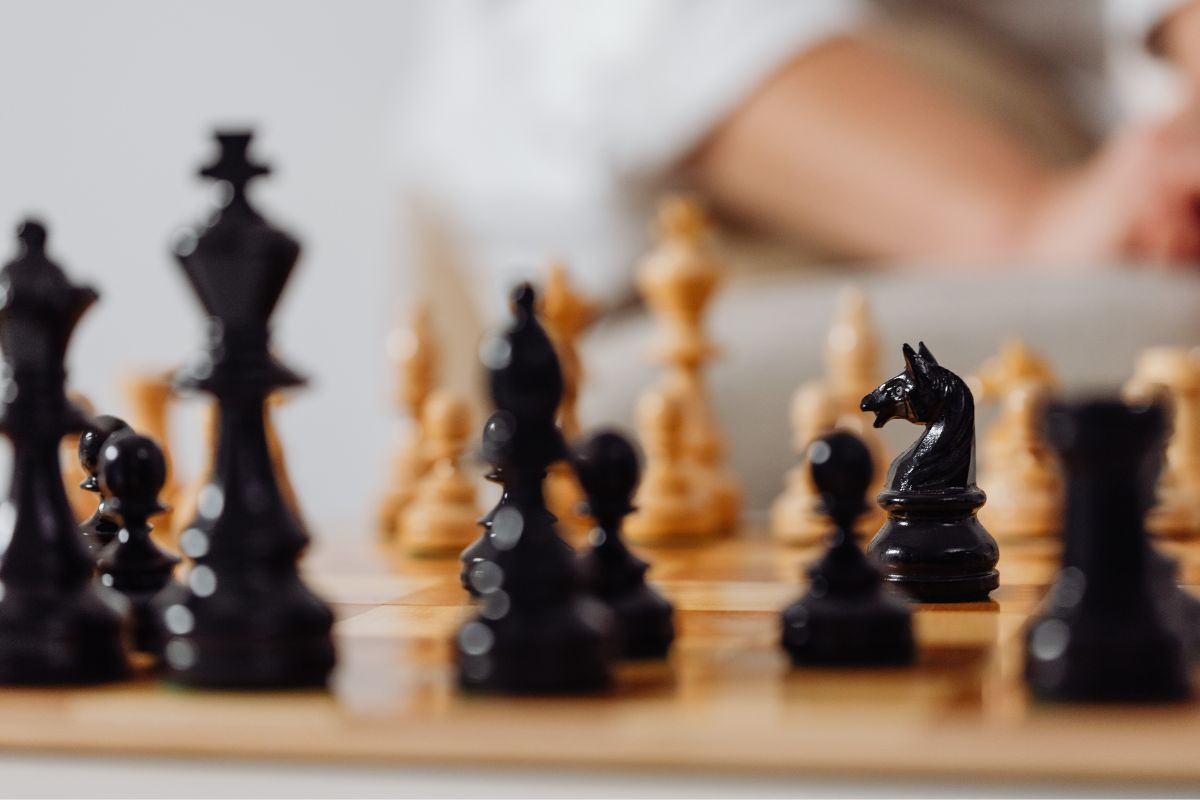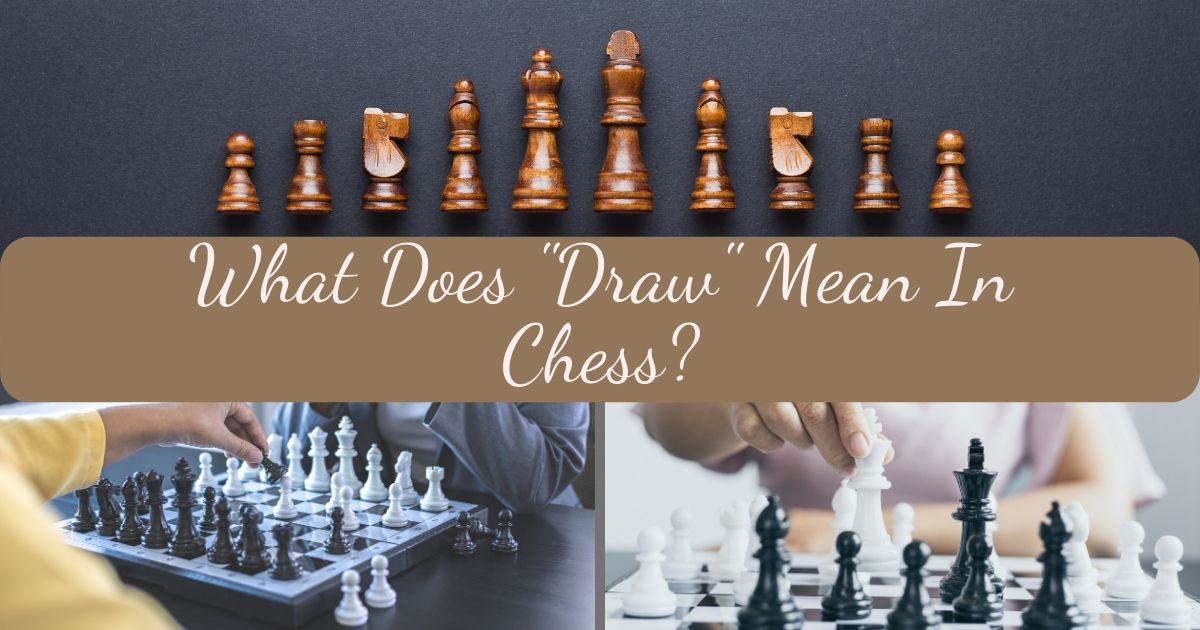Chess is one of the most intricate games that take years to master. This is why so many questions exist, and “What does draw mean in chess?” is really popular.
The reason for that is the variety of combinations that draw means in chess.
This article can help make sense of a draw using the experience from multiple past games.

What is a Chess Draw?
A chess draw is a fundamental element of the game. Every player should know the nuances of the chess draw rules.
What causes a draw in chess is the inability of both players to win or lose, so the game ends. One also calls the latter a tie in chess. Any player can ask for a draw, so each opponent wins half a point for the game. Interestingly, draws are more typical for higher-rated players.
What Does Draw by Stalemate Mean in Chess?
A draw by stalemate is one of the five scenarios for ending a game. The other kinds of draws are dead position, mutual agreement, threefold repetition, and the 5-move rule.
According to chess stalemate rules, when the player has to move but has no legal moves, and the king does not hold the check position, the draw happens. However, the move that caused the position has to be completely legal.
How to get a stalemate in chess? As we mentioned before, any other draw usually happens between higher-rated players. However, a draw by stalemate occurs in beginner games mostly. What causes a draw by stalemate, especially for beginners, is that one player usually finds themselves ahead in material but lacking the understanding of fundamental checkmating techniques.
As a result of poor knowledge, a draw by stalemate occurs when a stronger player fails to win by checkmate. Instead, they trick the opponent’s king without creating the check.
On the other hand, players with advanced skills and large experience (also known as grandmasters) manage to escape from a potential draw by stalemate creatively. One of the most famous examples is the 1991 game between GM Garry Kasparov and GM Anatoly Karpov.
Playing as Black, Kasparov managed to draw against Karpov as he maneuvered through the stalemate rule.
Chess Draw Rules Explained
There can be occasions during the game when neither player gets a victory or defeat. In this case, the most logical decision is to end the game, which is a tie in chess.
So, what does a draw mean in chess? The draw is the third way out of the game, outside win or lose. Today, there are five ways to end the game in a draw: stalemate, dead position/insufficient material, mutual agreement, threefold repetition, and the 50-move rule.
One of the ways to end the game by a draw is by request. Any two players can ask to draw, and if the other player accepts the offer, the game is over. As for the other ways, we shall look closer into different draws.
Some beginners can confuse a stalemate and a checkmate and miss a chance to win as a result. Checkmate happens when the player’s king is in check and cannot escape.
On the contrary, stalemate means the player is not in check and cannot make a legal move. As a result, the game ends in a tie with no winner. However, the checkmate always has a winner and a loser.

What Causes a Draw in Chess?
The most common reason for a chess draw, combining all the variations, is the inability to win by forcing a checkmate or any other legal way.
For example, game stagnation is also a valid reason for a draw. At this point, the goal is not to make the game meaningless.
Finally, when the course of the game deprives the players of pieces to force a checkmate, there is little point in continuing it.
All in all, a draw is a way to stop a game where there is not much possibility for players to win, or there is no sense in continuing.
Other Types of Chess Draws
As we mentioned earlier, aside from the draw by stalemate, there are four more scenarios of a draw in chess. The first draw we will look into is the dead position.
Dead Position
A dead position occurs when neither of the two players can checkmate the opponent’s king in a legal way. If the game hits this wall, the thing one has to consider is whether the move that caused the dead position is legal. If it is, then the tie in chess happens. In other words, the game ends.
Another name for a dead position draw is insufficient material. If one of the players does not have enough pieces to force checkmate, then the game is officially a draw.
One more curious situation is when white has all the pieces, but black can play with one king only, and the time runs out. When this happens, the game also ends in a tie because the player with black pieces cannot force checkmate.
The piece combinations that cause a dead position include:
- King vs. king
- King and knight vs. king
- King and bishop vs. king
- King and bishop vs. king and bishop of the same color as the other player’s bishop
Mutual Agreement
The easiest, yet not directly tied to the game kind of a draw is mutual agreement. If there is a reason for one of the players to end the game regardless of what is happening on the board, they can propose a draw, and the other player must accept it. But, if the opponent does not accept the offer, the game continues.
Threefold Repetition
The threefold repetition occurs when one of the players reaches a certain position at least three times during the game. Then, this player can propose a tie, and if the opponent accepts the offer, the game ends in a tie.
The reason why the threefold repetition occurs is that all the pieces of the same size and color come back to the identical positions where they were before, which means all the potential moves are the same.
However, unlike other draw combinations, the threefold repetition does not end the game right off. What ends the game is when one player offers a tie.
50-Move Rule
The rule of 50 moves exists to make sure the game does not stagnate when players do not make any progress. More specifically, if both players do not capture any opponent’s pieces or succeed with pawns, any of the players can offer a draw when it is their turn to make a move.
How to Avoid a Chess Draw
A beginner should know four ways to avoid a chess draw from the start.
The first way is to understand chess draw rules. Reading and watching specific resources and studying games are good ways to learn the rules of the draw.
Aside from learning other games, one can try observing their opponent. Suppose the other player can make another legal move without putting themselves in a check position. In that case, it is important to notice and have an advantage.
To ensure good observance, one should give the opponent room to move. Allowing the opponent to have a space for at least two moves will save one time to think of the check move.
Finally, the last piece of advice is to avoid concentrating on other pieces. Seeing multiple moves and removing less powerful pieces can force the insufficient material situation and cause the draw. To win the game, such a scenario is not suitable.

The Bottom Line
Learning chess is a hell of an activity even before starting the actual game. Draws are one of the primary steps one should at least try to practice to wrap one’s head around it. Whether it is a draw by stalemate, mutual agreement, or a dead position (let’s imagine you’re a pro already), understanding this aspect can help avoid a boring game.

